Avocado trees can be grown on the ground in your yard. They are also very lovely indoor plants. If you’re planning to plant an avocado tree in any of these two ways, you may be wondering what kind of growth rate to expect.
Under favorable environmental conditions, an avocado tree grows an average of 2.5 feet (30 inches) per year. The mature height of the avocado tree is about 30 to 60 feet.
The rate of growth will be determined by the environment and how you care for the tree during its first few years of life.
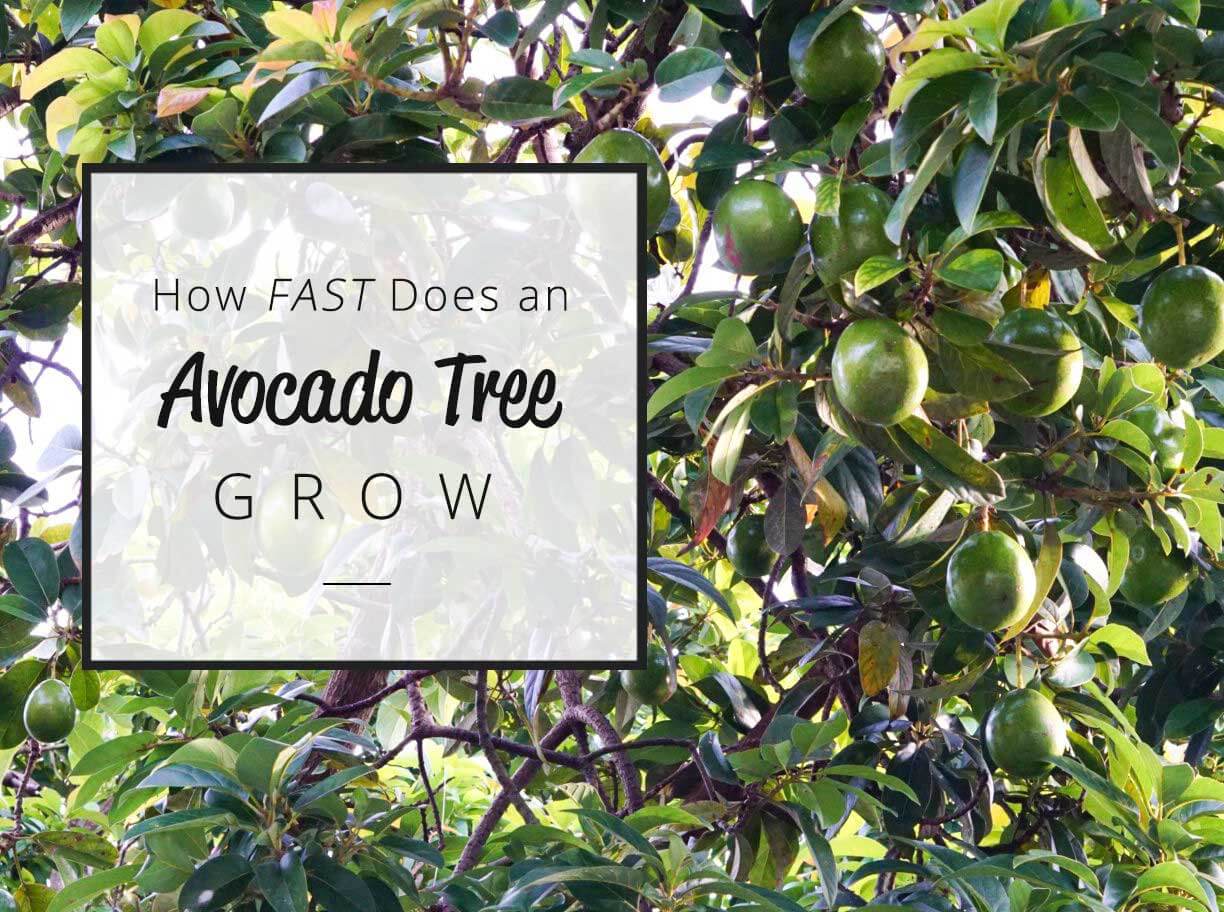
What we cover
ToggleHow many years does it take for an avocado tree to grow to maturity?
To get avocado fruits from your avocado tree, you may need to be a little patient. The waiting period might be a bit fun if there are children or adults who care more about the gardening experience than the fruit itself.
If you plant your avocado from its seed, you will have to wait for 13 years before eating its fruit. If on the other hand, you’re planting a little avocado tree, it may start fruiting after 3 to 4 years.
How much does an avocado tree grow in a year?
Avocado trees grow up to 2.5 feet (30 inches) in a year. This is more realistic if it is exposed to the necessary environmental conditions such as temperature, sunlight, water, nutrients, and so on.
How long does it take to grow an avocado tree from seed?
You are best buying an Avocado tree sapling to save you a couple of years of growth and get you to a fruit-bearing tree sooner, but if you want to grow from seed, it will take a few weeks to begin sprouting and a full year before you have a viable sapling.
How soon do avocado trees produce fruit?
An avocado tree will start to bear some immature fruits around 7 years old. If you want to speed up the fruit production process, you can introduce grafting or improve its growing conditions. Grafted avocado trees will start to bear fruit around 3-4 years old.
Avocado trees will produce fruits throughout their lives. Their fruit production will however start to diminish as the tree gets older.
How to make your avocado tree bear fruit faster
If you’re looking to increase fruit yield in your avocado tree, you can do that by improving the growth conditions in the following ways:
Use of fertilizers
Adding fertilizers to avocado trees will improve the rate at which they bear fruit. Young trees require fertilization up to six times per year. Older trees can equally be fertilized four times a year.
Recommended fertilizers to use include 6-6-6-2 or 8-3-9-3. For a one-year-old tree, you can divide the fertilizer into equal portions in order to deliver 1.5 to 3 pounds per year. For a two-year-old tree, it will add up to 3 to 6 pounds, and 6 to 9 pounds per year for a three-year-old tree. For a four-year-old tree, it should add up to 9 to 10 pounds per year, and 10 to 14 pounds for a five-year-old tree.
Trees that are older than five years old require an extra 2 pounds of fertilizer per year for each year of the tree’s growth up to a maximum of 20 pounds.
Additional nutritional supplement
In avocado trees, less than five years old, nutritional supplements such as those containing zinc, boron, manganese, and molybdenum will improve their growth. You can add the supplements up to six times per year for young trees and four times per year for old trees. Nutritional supplements can be added especially during mid-spring to late summer at regular intervals.
Iron chelate is another useful nutritional supplement for avocado trees that are growing in alkaline soils as they may show deficiencies in iron. It will help to compensate for this nutrient deficiency and boost the growth, fruit yield, and overall health of the tree.
How long do avocado trees live?
Avocado trees can live for 200 to 400 years. By the end of their lifespan, their fruit may start to diminish and may not be worth harvesting.
How to grow an avocado tree at home
It’s fun to plant an avocado from its seed by children or adults alike. Once you get a hold of fresh green avocado, you can eat it and plant the seed in a glass of water. Follow the steps below to plant your avocado tree
Insert toothpicks around the diameter
Comparing your avocado seed to the world globe, insert a number of toothpicks around the equator. Only about a quarter of the toothpick’s length should go inside the avocado pit. You need 2 to 3 toothpicks evenly spaced around the pit.
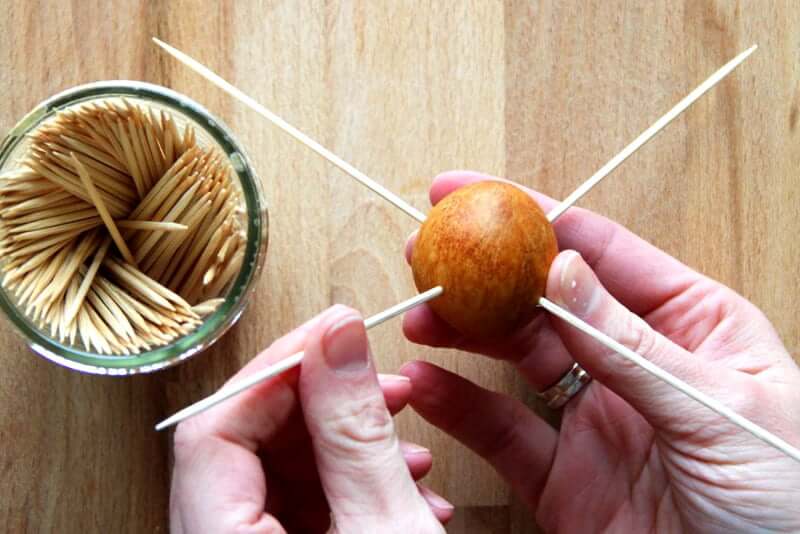
Partially immerse your seed in water
Fill your water glass almost to the brim. Place the circle of toothpicks over your water glass with the flat end of the avocado seed immersed in about 1 inch of water. Leave the other end of the seed open to the air. Stick the toothpicks a little deeper into the seed to ensure that they hold it firmly.
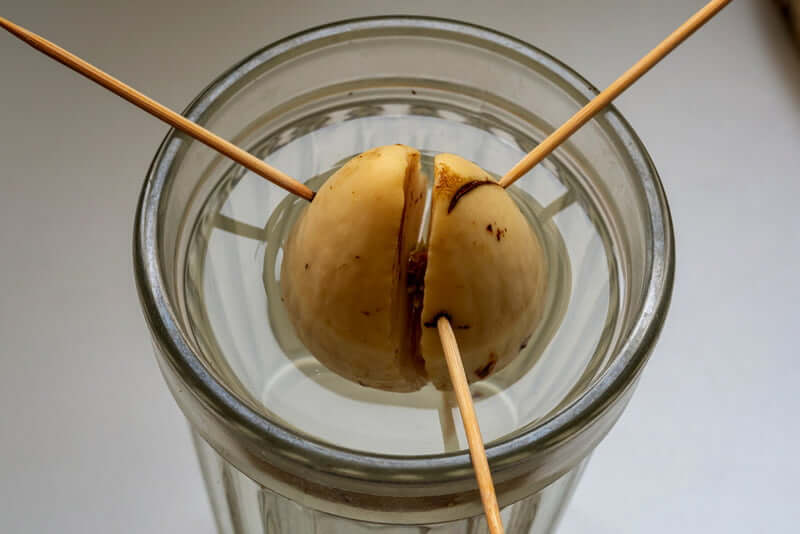
Allow the roots to grow
Keep the water glass in a temperate area and away from direct sunlight. Ensure regular addition of water to cover about 1 inch of the bottom end of the seed all the time. Change the water completely every four or five days to terminate the growth of bacteria.
After some days, the roots will evolve from the bottom of the seed, and after about eight weeks, there should be an emergence of a slender seedling. If there is no change to the seed after eight weeks, it means the seed is not viable. You will have to start the process all over again with another viable seed and ensure that the bottom end is placed in the water.
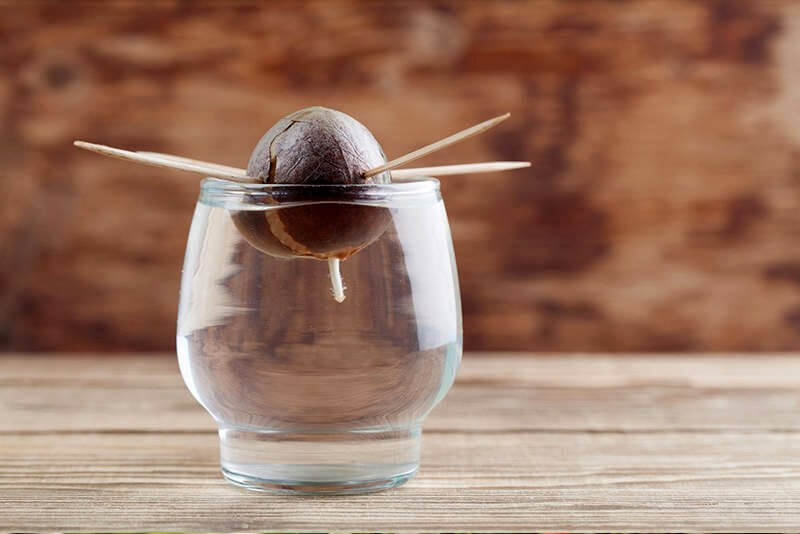
Cut the Stem
When the seedling is about 6 or 7 inches tall, you may need to cut the stem in half if you’re growing an indoor plant. This may seem counterproductive to the growing process but will allow the plant to start putting its energies into new growth.
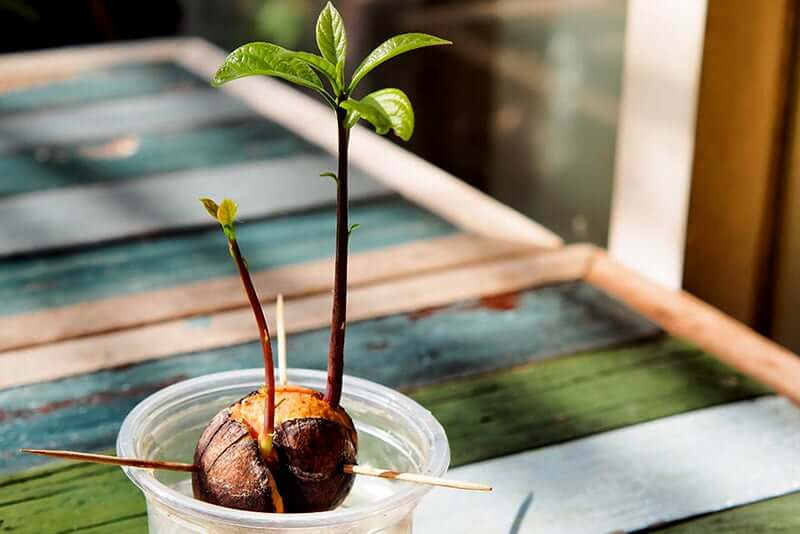
Plant the seed in soil
After the seedling starts to show a few leaves and solid roots, it’s time to plant the seedling in your indoor pot. It will be good to use a pot that is about 10-inch-wide and full of soil and drainage holes.
Ensure to leave the top of the seed exposed above the soil line. Add enough water to the soil until it starts draining out of the pot. However, you should not overwater tour avocado seedlings. You should allow the soil to dry up before catering again. Once your plant starts to have yellow leaves amidst wet soil, then you’re overwatering.
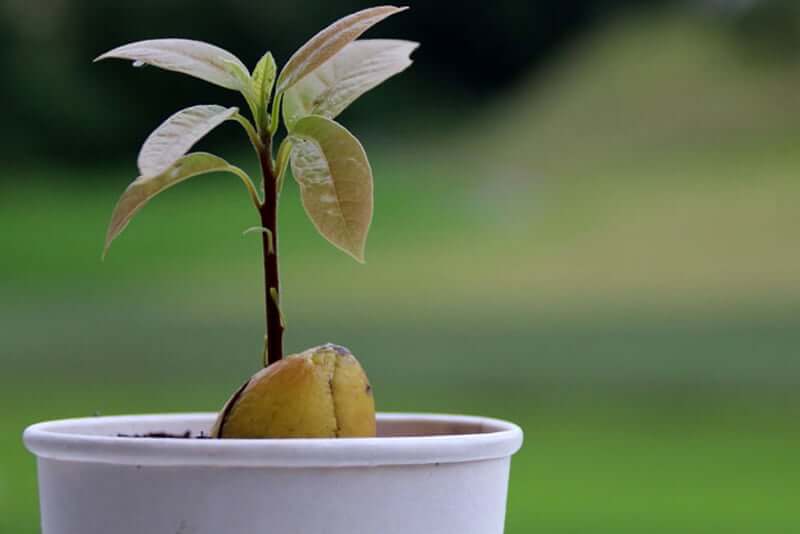
Expose your pot to sunlight
When the temperature is about 45°F or warmer outside, you can take your pot outside so your avocado plant can get some hours of sunlight. You can as well put it in a sunny window indoors. When the plant is kept outside and warm, you should water it frequently once the water in the soil dries up. Make sure your potted avocado plant is not exposed to too much direct sunlight to avoid sunburn.
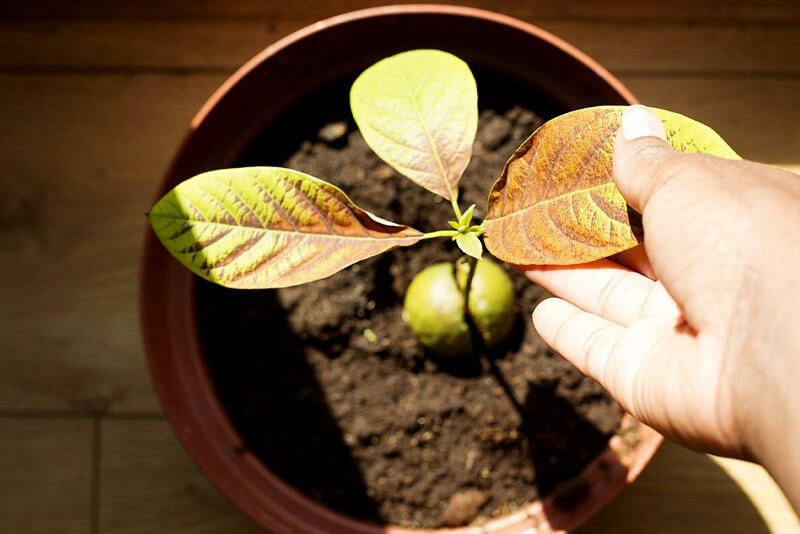
Prune your potted avocado tree
If you have planted your avocado tree in a pot, you need to ensure that the height doesn’t get out of hand. You can do this by pruning the fruit tree regularly. As it grows to add another 6 inches in height, you’ll need to cut back the top two sets of leaves.
Also, when the plant reaches 12 inches, you will cut it back to 6 inches. When it is 18 inches, you will cut it back to 12 inches, and it goes on like this. This pruning encourages bushier growth rather than tall growth. When the tree has matured a bit, you can transfer your avocado into a bigger pot in a gentle manner.
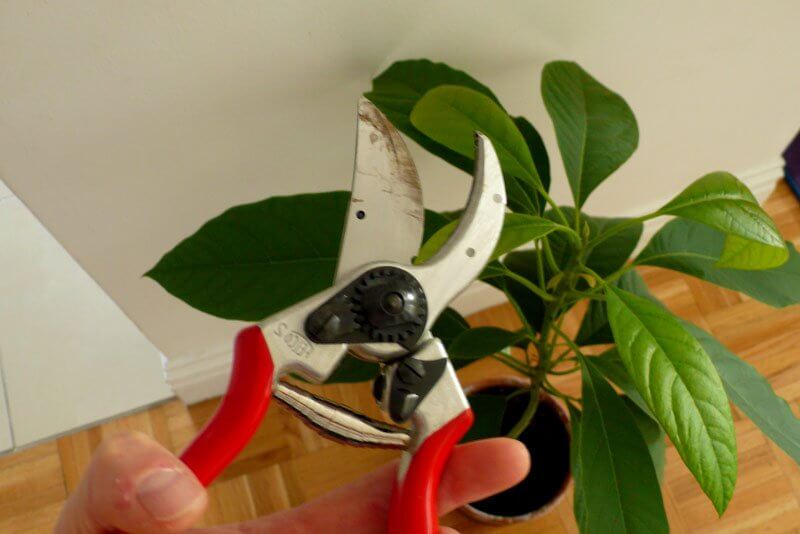
Fertilize weekly during summer
During summer, when the growth is rapid, you can add Nitrogen-rich fertilizers (such as 7-4-2). Avocados also need some zinc, so you can add Zinc-rich fertilizers and supplements as well. You should avoid adding fertilizers during winter since the growth is minimal.
Do avocado trees need full sun?
Yes. Avocado trees need full sun. Avocado trees will grow best when they receive 6 hours of direct sunlight each day. Avocados also do well with partial shade, they do not grow well without receiving some direct sunlight. In the absence of direct sunlight, your avocado plant may end up with severe developmental issues. It’s worth noting that Avocados are native to the sunny, warm climates of South and Central America. They require a lot of daily sunlight to replicate similar growth patterns in your home or yard.
How many hours of sun do avocado trees need?
A healthy avocado tree will need at least 6 hours of direct sunlight to meet all its needs. However, the more sunlight you can provide to your avocado tree, the better. Even though their leaves are prone to sunburn, it’s hard to get such excess sunlight that can result in this.
Due to their high sun requirement, avocados do well in sunny regions like Southern California because of their warmer temperatures and dry climate.






